|
10 Tips for Working Successfully from Home We are all trying to keep ourselves and our loved ones healthy by limiting our social contacts. Therefore, more of us are working from home than ever before. While some of us work from home regularly, others are doing so temporarily. During the past several years, remote work has become both more widespread and easier to accomplish, given ready access to high-speed internet, video conferencing software, instant messaging, and a high-quality set of headphones. Below are 10 tips for successful remote work.
 1. Establish a dedicated workspace Working from home does not provide the natural boundaries of time and space that a workplace provides. You don’t leave your work behind by leaving your place of employment. Therefore, it’s vital to create some sort of physical boundary at home. Although if you are only working from home temporarily you might not have a dedicated home office, it’s important to find a room or a part of a room you can temporarily use as an office space to help you develop a boundary between your work and your home life. It's key to separate the two! Ideally, it will be a silent space where you won’t be interrupted by family members or other distractions. But, please do not use your bed, that needs to be set aside for sleep. Also an important aspect of finding a dedicated workspace. 2. Develop a morning routine Even though it’s enticing to roll out of bed and start working right away, or even check your email on your phone while you’re still in bed, it’s highly recommended to develop the same type of routine you would have if you were commuting to work. Wearing PJs and sweatpants all day can be awesome at first, but the novelty wears off pretty fast. Get up, take a shower, get dressed, put some face cream on, have breakfast, drink a big glass of water, take your supplements, have some coffee, exercise - whatever you would do if you were commuting. Keep your routine or develop a slightly modified version. It needs to work for you. 3. Establish time boundaries According to a 2019 survey, 43% more remote workers than onsite workers say they work more than 40 hours per week. Although this may be because they are enjoying what they are doing, or are caught up in a project they want to finish, or some other grounds, it’s very vital to establish a work routine. Particularly if you are working with co-workers in different time zones, it’s tempting to want to make yourself available over several time zones, which can result in a 10+ hour day. Although that isn’t the ideal arrangement, if it works best for you and your team, then be sure to build in time in the middle of the day for an exercise break, take care of personal business, go for a walk, hike up the mountain, or just relax and do some meditations.  4. Socialize with co-workers When you work in an office setting, part of your daily routine involves chatting with co-workers about non-work issues, whether it’s over lunch, brief chats in your office, by the bathroom area, or whatever. But working remotely you can have meetings with co-workers but they may be all business. Therefore, it’s important to build in a modest chat time - either at the beginning or end of a Skype meeting, via a brief IM chat, or other means. A day shouldn’t go by without a quick, “Hi, how are you doing?” between yourself and another co-worker. Otherwise, the well-known hermit syndrome can result. 5. Create a project schedule for yourself While there are typically less distractions when working from home than in an onsite work setting, it’s still important to make a list of projects you are working on and assign priorities to the projects. It also helps to share your completion goals with your teammates to remain accountable. Sticking to a plan is easier when working remotely because you are less likely to be pulled into unforeseen meetings. If you’re working in a team where some are onsite and some are remote, then your strength as a remote worker is being able to complete projects - writing projects, for example - while onsite teammates might be involved in troubleshooting, organizing, and engaging in multi-team meetings. 6. Take a lunch break Don’t forget to eat. It's important! Stay well nourished. It’s easy to get caught up in what you’re doing and forget to stop for lunch. Take a good half hour away from your computer - and don’t sit and eat while working. If possible, go outside and have your lunch in the sunshine. Some fresh air can help clear your mind, too.  7. Don’t forget to move While you’re working onsite it’s more likely you will have occasion to get up and move - to go to a conference room for a meeting, to chat with a co-worker in another office, walk upstairs to chat with another department member and so on. But when working alone at home, it’s easy to sit for hours and forget to get up and move. Try to get up and move for at least a minute or two every 30-45 minutes. If necessary, set a timer to remind yourself. Walk up and down the stairs, walk around the house, chase the cat, or play with the dog, do 20 push-ups, squat 40 times, throw in 10 jumping jacks, add 20 lunges, you get the picture! 8. Drink water Just like any other time, it’s important to drink plenty of water. Keep a bottle of water next to you to sip on throughout the day. This will also cause you to get up and move once in a while. Ideally, you drink half of your body weight in ounces every day. YES, every day. So for example, if you're 200lbs, you should drink at least 100 ounces of water. Just in case you don't like water, squeeze a little bit of lemon juice in your water and add a pinch of clean, unrefined, unfiltered, unprocessed sea salt. This will also help you add vital trace minerals back into your system along with natural electrolytes. 9. Remote doesn’t mean less than Even though remote work has become the format of choice for some large companies, the stereotype image of the remote worker as a slacker in PJs lounging on the couch still exists. It’s easy to feel inferior, less than, that you’re missing out on important information, etc. In fact, there is even a syndrome - impostor syndrome - that describes the insecurities associated with remote workers. Remember, you are still a valuable member of your team. If you feel out of the loop, schedule a meeting with someone who can bring you into the loop.  10. Create a hard stop When you’re done for the day, be done - shut down your computer, turn off the lights, leave your work area and close the door. Unless there’s a good reason, don’t continue to check your email on your smart phone throughout the evening. There is always tomorrow. Establishing good remote work hygiene is just as important as developing good sleep hygiene and will go a long way toward making it a successful endeavor, whether temporarily or long-term.
0 Comments
Coronavirus: Symptoms & Natural Solutions The coronavirus, aka COVID-19, is all over the news and social media. It is a new strain of coronaviruses that first started in Wuhan, China in December 2019. It causes fever, coughs, shortness of breath, and upper-respiratory symptoms. In this article (original source link below), you will learn what the coronavirus is, how it spreads, what are its symptoms, and who is at risk of the infection. You will learn about some major lifestyle factors that can cripple your immune system and put you at greater risk of any virus or respiratory infection. This article will also show some natural solutions that can help to prevent viruses, respiratory infections, and illness this season and help you recover quickly if you do get sick. What Is the Coronavirus Coronaviruses (CoV) are a large group of viruses. Different strains may cause different illnesses ranging from the common cold to more severe diseases, such as the Severe Acute Respiratory Syndrome (SARS-CoV, or SARS) or the Middle East Respiratory Syndrome (MERS-CoV, or MERS). Coronaviruses tend to be zoonotic viruses, which means that they can be transmitted between people and animals. For example, SARS was transmitted from civet cats to humans, whereas the MERS originally spread from camels to humans. There are various strains of coronaviruses that are circulating between animals but have not infected humans so far. If you check the news and read about the coronavirus, they are referring to the novel coronavirus (nCoV) or Coronavirus Disease 2019 (COVID-19), a new strain of coronaviruses that haven't been previously seen in humans and has been spreading since late 2019. Symptoms Symptoms are similar to the flu and the common cold, however, may become severe and lead to complications in those with chronic health issues or in older people. The mortality rate is at 2 percent in Hubei providence in China where the outbreak started and less elsewhere. This is much better than SARS, which had an over 10 percent mortality rate or MERS which killed about 35 percent of those infected. The CDC currently believes that the incubation period of the virus can be up to 2 weeks, and symptoms may appear within as few as 2 and as long as 14 days after exposure to the virus. This is very similar to what we’ve seen in the Middle Eastern Respiratory Syndrome (MERS) back in 2012. Symptoms of the coronavirus infection are very similar to symptoms of the flu (influenza) virus. Based on what we know, symptoms may include:
Symptoms may range from mild symptoms to severe. In some cases, people may develop a more severe illness, such as bronchitis or pneumonia, and in severe situations, it may result in death. Who Needs to Watch Out?
According to the current understanding, the coronavirus spreads very similarly to other coronaviruses and other upper-respiratory infections. The virus mainly spreads person to person between people who are in close contact, or within 6 feet, of each other. It spread via respiratory droplets coming from an infected individual's coughs or sneezes. When a healthy person nearby inhales these droplets into their lungs, they may get infected. While this is not the main way to get sick, the virus may also spread by touching one's own mouth, nose, or eyes after touching an object or surface with the virus on it. Based on what we know, the coronavirus is the most contagious when someone is the most symptomatic, however, it may also spread before someone shows any symptoms. However, at this point, we don't know enough how contagious the coronavirus is. How Do You Get Infected by Coronavirus? What we know for certain is that in order to get infected by the coronavirus, you have to be in contact with someone who is sick or perhaps with an object a sick person has touched recently. According to February 26, 2020, there are 14 confirmed cases in the United States, 12 of these are travel-related and 2 are person-to-person spread. Out of the 80,239 cases, 77,780 are in China and most other cases are in the Western Pacific Region of Asia, including South-Korea and Japan, as well as Italy. If you are in the United States, at this point, there is little reason for you to be worried. However, since the virus is spreading, experts speculate that we may be facing a pandemic situation soon, it is important to be up to date and educated. For up-to-date information, including travel warnings, you can check the CDC's and the WHO's website. The BIG questions....So What Can I Do? 5 Lifestyle Activities That Cripple the Immune System Your immune system's job is to protect you from infections and illnesses. Your immune system is the one that helps you recover if you get sick. Having a strong immune system is absolutely critical to protect your body against viral infections, including the coronavirus. The problem is that there are several lifestyle activities that many people engage in that can cripple your immune system and make you more vulnerable to illness. The top 5 lifestyle factors that may prevent your immune system from functioning optimally. Here the short list - details below:
Top 10 Natural Solutions For Coronavirus There are currently no vaccines to prevent the coronavirus and there are no anti-viral or other medications to treat the illness. Supporting your immune system is absolutely critical when it comes to the prevention and treatment of the coronavirus and other respiratory viral infections. Below are 10 natural solutions to boost your immune system and protect your body from illness and infections. Remember, these are great tips not only when it comes to the coronavirus, but for the common cold and the flu as well. 1. Eight Foods to Support Immune Health Eating a nutrient-dense diet is one of the best and non-negotiable ways to support your immune health. It is important that you eliminate refined sugar, refined oils, artificial ingredients, processed foods, and junk food, and instead, focus on a diet that’s rich in greens, vegetables, herbs, spices, fermented foods, fruits, and healthy fats. Certain foods are particularly beneficial for your immune health because they have higher immune-boosting properties than others. It is important that you add them to your nutrient-dense diet. These foods include:
2. Good Hydration If any way possible drink half of your body weight in ounces of clean water minimum a day. For example, if you're 200lbs you should drink 100 ounces of clean water every day! If you are exercising or doing physical labor, spending time out on the hot sun, sweating a lot in a sauna or hot tub, recovering from an illness or infection, or otherwise feeling dehydrated, make sure to drink more. To ensure that you drink high-quality, clean water, use a high-quality reverse osmosis system that purifies your water by removing all the toxins. Make sure to use a stainless steel or glass bottle to avoid toxic chemical residue from plastic bottles. It is also important that you eat plenty of hydrating vegetables and fruits and drink green juices, bone broth, or herbal teas in addition to your water intake. Avoid sugar, sugary drinks, energy drinks, and too much coffee that may dehydrate your body. 3. Good Sleep, Fresh Air & Daily Movement Keeping your body healthy is more than just food and water. Getting good sleep, fresh air, and daily movement are all crucial for a healthy immune system. Get 7 to 9 hours of quality sleep on a regular basis. If you are feeling sick, make sure to honor your body, and rest plenty. Get some fresh air on a daily basis. Go for a walk, do some grounding by standing or walking barefoot on grass or dirt, or just simply open your windows and air out the rooms. Do some daily movement. Exercise for 20 to 30 minutes 5 days a week, and keep an active lifestyle through nature walks, stretching, yoga, dancing, walking your dog, and playing with your kids. Even if you are feeling sick, it is important to stretch or do some small movement as much as you can handle. 4. Keep Stress Down & Practice Gratitude Keeping your stress levels down is key to your immune health. Practice gratitude daily. Upon waking, think about the things that you are grateful for. Stop and appreciate the small things throughout the day. Keep an evening gratitude journal. Say a daily prayer or engage in the spiritual practices that uplift you. Journal regularly. Try meditation and breathwork. Say daily affirmations. Practice positive thinking. Talk things out with your friends, family, or therapist. Make sure to have some 'me-time' regularly. Surround yourself with positive people and uplifting activities as much as possible. 5. Diffuse Essential Oils Diffusing essential oils may be beneficial for both the prevention and treatment of infections. They may help to open up your airways, reduce mucous, improve coughs, calm sore throats, and reduce sinus issues. Essential oils that may benefit coronavirus, cold, and flu symptoms include eucalyptus, rosemary, peppermint, frankincense, oregano, thyme, geranium, cinnamon, nutmeg, bergamot, cypress, and tea tree essential oil. These essential oils may offer antioxidants and immune-protective qualities. It is important to mention that some people may be sensitive to certain essential oils. Start out with a small amount, preferably, when you are feeling well. Pay attention to your body and reactions. 6. Garlic Salve For Coronavirus Whether you have the coronavirus, the flu, the common cold, or other upper-respiratory issues, if you are symptomatic, try homemade garlic salve for coughs and colds. It's simple to make and easy to use. Use:
7. Take Vitamin C for Coronavirus There is a reason mothers give vitamin C supplements and orange juice when you were sick as a child. Vitamin C is one of the best vitamins when it comes to illness. Research has shown that it has incredible benefits for lung infections and it is one of the most important vitamins for your immune system. Vitamin C rich foods include lemon, lime, oranges, mandarins, grapefruits, guava, strawberries, papaya, pineapples, kiwi, sweet green pepper, broccoli, and Brussels sprouts. Remember that sugar is the enemy of vitamin C, so make sure to eliminate any food with refined sugar and reduce your overall natural sugar (carb) intake as well. Try Thorne's "Buffered Vitamin C" supplement (Amazon link). 8. Optimize Vitamin D & Zinc Vitamin C is awesome, but let's not forget about Vitamin D and zinc either. They are both essential to support your immune system, yet most people are not getting enough. Sunshine is the best way to improve your vitamin D needs, however, with our indoor lifestyle or colder seasons, it is impossible to meet all your needs. To boost your vitamin D levels, try a daily Vitamin D/K2 supplement for both prevention and treatment. Zinc is another nutrient that people seem to not get enough through diet alone, especially when not eating a nutrient-dense, immune-boosting diet. This can lead to immune dysfunction and more infections and illness. To improve your zinc levels and keep illness way, eat lots of zinc-rich foods, including pumpkin seeds, asparagus, chicken, salmon, and grass-fed beef regularly. 9. Use Elderberry & Astragalus Elderberry and astragalus are fantastic for coughs, congestion, and other respiratory illness symptoms. Use them to strengthen immune defenses that defend against colds, the flu, the coronavirus, and other infections and to aid recovery if you get sick 10. Use Specific Herbal Support Formula Herbs are the best friends of your immune system. However, it is important that you are strategic when you are using herbal support and use a specific herbal support formula that’s created to support your immune system, lungs, and respiratory tracts. Find natural respiratory support formulas that use powerful blends of herbs and essential oils, including lovage root, eucalyptus leaf, peppermint left, lemon balm leaf, lungwort leaf, orange leaf, plantain leaf, chapparal leaf, menthol, elecampane root, lobelia flower, and peppermint essential oil, to encourage lung, sinus, and respiratory tract health. Source - click here. Here is a very simple strategy for you to try to help your digestion - Every time you eat a meal, chew each bite of food twenty-five to thirty times. Yes, twenty-five at a minimum. Your mouth is full of digestive enzymes. Therefore, by taking your time and chewing, you're giving those enzymes a chance to do their job. You're also allowing optimum time for your gallbladder to release bile into your stomach. Chewing thoroughly can also activate hormones that will make you feel fuller faster, stimulate hydrochloric acid to break down proteins, and even stimulate your parasympathetic nervous system so that you are not eating in a stressed state. So next time you are having dinner with friends, slow down and chew your food. You may want to put your fork and knife down while you're chewing. That simple little trick can help you focus on chewing your food more fully. 5 Ways Fasting Can Improve Your Lifespan & Overall Health Is fasting really good for you? These days, you can't have a health conversation without talking about fasting. Fasting is now considered a promising way to help people live longer, just one of the many health benefits of fasting we're now seeing in the research. How to slow down the negative effects of aging with fasting A recent literature review published in the New England Journal of Medicine has concluded that, based on years of prior data, fasting can help you live longer! This is consistent with other data from institutions such as the National Institute on Aging (NIA), the University of Wisconsin-Madison, and Louisiana's Pennington Biomedical Research Center, where researchers found that daily fasting improves health and longevity in animal models – independent of what or how much the animals ate! Here are five other benefits of fasting based on the current research:
5 tips on how to fast successfully
Let me know how it goes. Avoid These Top 10 Inflammatory Foods Inflammatory foods can be major players in the development of the suffering in our society. This is because the process of inflammation is at the root cause of most chronic health issues. Learn what foods you should eliminate and what diet to follow to reduce inflammation, pain, and disease. With so many dietary advice out there, it can feel confusing to find the right one. The truth is that eating healthy is actually rather simple. Once you understand what foods may damage and what foods may protect your health, you can finally eat a nutrient-dense diet with a worry healing your body with every bite. What Is Inflammation Inflammation is your body's natural defense mechanism to fight against potential harm, such as infections, injuries, and toxins. It is part of your body's inherent immune response that promotes healing an recovery. Inflammation itself is not bad. Acute inflammation helps you to repair tissue damage when you have an injury and help you recover from colds, illness, or exposure to allergens. The problem is chronic inflammation, which is the result of an excessive stress load on your body, including physical, emotional, and chemical stress. Being exposed to constant stressors, your immune system becomes overwhelmed and increases the inflammation response. This can lead to more white blood cells, cell changes, and eventually tissue and organ damage. Chronic inflammation plays a role in a variety of chronic pain symptoms and health issues, including metabolic syndrome, type 2 diabetes, Alzheimer's disease, non-alcoholic fatty liver disease, and autoimmune conditions. The Role of Diet & Inflammation Diet plays a major role when it comes to inflammation. An inflammatory diet that is low in nutrients is one of the main causes of modern-day inflammation. Cytokines are proteins secreted by your immune system to regulate your immune response. Certain foods can trigger your immune system and lead to the overproduction of pro-inflammatory cytokines and the underproduction of anti-inflammatory cytokines The good news is that your diet also plays a role in preventing and reducing inflammation. While, inflammatory foods, such as sugar, refined oils, and gluten may increase the risk of inflammation, eating an anti-inflammatory diet may help you to overcome chronic inflammation and improve your health. Major Nutritional Factors for Inflammatory Foods Several major factors that play a role in chronic inflammation. When we consume food it will have an impact on our physiology and these 3 factors are key considerations when it comes to the foods we choose:
Blood Sugar Impact An inflammatory diet with too much sugar may lead to blood sugar imbalances in your body. This may cause inflammation and the overproduction of inflammatory cytokines increasing your risk of insulin resistance and elevated blood sugar levels leading to further inflammation, pain, and disease. Damaged Fats in Foods Your body needs fats for fuel, but not all fats are created equal. Polyunsaturated fats, such as corn, soybean, safflower, and other vegetable oils are highly unstable and prone to oxidation when exposed to heat, light, or air. During the cooking processed they also become damaged or oxidized making them even more inflammatory and destructive to your health. These oils are particularly bad for the endothelial lining of your blood vessels and for your skin and greatly contribute to the formation of acne, aged spots and wrinkles. Chemical Toxins in Foods Environmental toxins are everywhere, in our air, food, water, and products. Long-term exposure to environmental toxins may overwhelm your immune system and increase chronic inflammation. An inflammatory diet with lots of processed, refined, and non-organic foods are high in toxins. Choosing and anti-inflammatory, organic, and healing diet, however, may lower inflammation. Top 10 Inflammatory Food List
Top 10 Inflammatory Food List Details
What To Do? - Healing Diet Follow a healing diet to reduce inflammation, lower risk of developing chronic disease and improving your overall health. Eating a healing diet can reduce inflammation in your body, stabilize your blood sugar, reduce toxic load, fuel your body with foundational nutrients, and support your healthy blood pH. Try these steps:
Overeating and what happens to your body. Post-Binge Biology (and 8 Things To Do Afterward)
Feasts happen on a regular basis. Candy is given and received as gifts. And there are parties immeasurable, at work, with family, with friends, where calorie-dense, rewarding food is handed out, like, well, candy. The holiday season is a practice in overeating, and it can be very hard to avoid. You may not want to even avoid it; there’s something to be said for letting loose now and again on special occasions, especially when holiday cheer is in the air. But what happens to your body when you overeat? And what can you do about it? The type of overeating most people do across the holidays is high-sugar, high-fat, and relatively low protein. These are your cakes and cookies. Your brownies and fudge. Your pie for breakfast. This is the worst kind of overfeeding you can do. Research shows that just six days of high-sugar, high-fat, low-protein overfeeding rapidly increases fat deposition in the liver and muscle. Seven days of overfeeding reduces whole body insulin sensitivity, inhibits glucose clearance, and impairs endothelial function. If you keep doing it, say, over the course of a month, bad things pile up. You get incredibly insulin resistant. Your liver fat increases. Your body weight and overall body fat increase. Your C-reactive protein increases, an indication of inflammation. A class of antioxidants called plasmalogens also increase, which means your body is fighting oxidative stress. One problem with the studies is that you have to distinguish between quality and quantity; overfeeding with different foods elicits different effects. For instance, in the study that looked at overfeeding’s effect on lipid metabolism, the subjects overate by eating more cookies, potato chips, and cheesecake and drinking an oil-based liquid supplement. Overeating a bunch of that junk food is different than overeating steak. In fact, research shows that overfeeding protein has little to no impact on fat or weight gain compared to carbohydrate or fat overfeeding. Also consider individual variability. Some people are “obesity prone.” Others are “obesity resistant.” In one study, obesity prone and obesity resistant subjects had different responses to three days of overfeeding. The obesity prone people saw their fat oxidation rates drop during sleep; they burned less fat. The obesity resistant subjects saw their fat oxidation rates unchanged during sleep; they continued burning fat like normal. So, when we talk about the effects of overeating, we have to keep in mind that the effects will differ between individuals and vary if you’re eating a pound of roast lamb versus eating half a pie. But the general point still stands: Overeating can make you gain weight, gain liver weight, induce oxidative stress, cause insulin resistance, increase inflammation, and make you sicker, fatter, and more unwell the longer it goes on. Here are 8 tips for scaling back and minimizing damage.
Details to these 8 tips:
Source - click here. Is It Harder to Be Skinny Today Compare to The 80-is?
This article below explains why it may be harder today to be skinny compare to 20 years ago. Keep on reading! If you have questions, let's connect! A study finds that people today who eat and exercise the same amount as people 20 years ago are still fatter. The 2016 study published in the journal Obesity Research & Clinical Practice found that it’s harder for adults today to maintain the same weight as those 20 to 30 years ago did, even at the same levels of food intake and exercise. The authors examined the dietary data of 36,400 Americans between 1971 and 2008 and the physical activity data of 14,419 people between 1988 and 2006. They grouped the data sets together by the amount of food and activity, age, and BMI. They found a very surprising correlation: A given person, in 2006, eating the same amount of calories, taking in the same quantities of macronutrients like protein and fat, and exercising the same amount as a person of the same age did in 1988 would have a BMI that was about 2.3 points higher. In other words, people today are about 10 percent heavier than people were in the 1980s, even if they follow the exact same diet and exercise plans. "Our study results suggest that if you are 25, you’d have to eat even less and exercise more than those older, to prevent gaining weight,” Jennifer Kuk, a professor of kinesiology and health science at Toronto’s York University, said in a statement. "However, it also indicates there may be other specific changes contributing to the rise in obesity beyond just diet and exercise." Just what those other changes might be, though, are still a matter of hypothesis. In an interview, Kuk proffered three different factors that might be making harder for adults today to stay thin.
The fact that the body weights of Americans today are influenced by factors beyond their control is a sign, Kuk says, that society should be kinder to people of all body types. "There's a huge weight bias against people with obesity," she said. “They're judged as lazy and self-indulgent. That's really not the case. If our research is correct, you need to eat even less and exercise even more” just to be same weight as your parents were at your age. Source: The Atlantic - click here What Natural Remedies Work and What Don't Watch out! The cold season is coming! Time under sunshine is down and with it are Vitamin D levels. People are confined indoors. Kids are walking virus carriers. And the lovely drug stores are advertising free flu shots. Guess what? It's that time of year. A few of you are probably already sniffling or maybe trying to disregard the pain of swallowing with a sore throat. Colds seem like an inevitability, maybe not so much since you've cleaned up your diet, but nothing is 100%. You most likely will get sick. You probably will catch a cold. Or someone close to you will. What can you do for yourself? For your sick kid or partner? Are there any natural cold remedies that actually work? Here you go. 12 Possible Natural Remedy Suggestions That Could Help
So, there you go: a good list of therapies, supplements, foods, and nutrients to include (or not) in your anti-cold regimen this season. If you have any suggestions, any recommendations, or questions, contact us or add your comments below. Source: Mark's Daily Apple - click here Tired In the Morning? Easy Steps to Enhance Energy Fatigue is a serious problem in our contemporary world that millions of people are facing every day. Morning fatigue is characterized by tiredness, lack of energy, or lack of motivation that is present in the morning. However, it often continues during the day. Morning fatigue may have a serious impact on physical, mental, emotional, and spiritual health and overall quality of life. The good news is that you can combat morning fatigue and enhance your energy naturally. Below are 6 potential causes and 6 steps to beef up your energy naturally to reduce morning fatigue. 6 Causes Morning Fatigue Fatigue may have a diversity of causes, including quality of sleep, physical health, diet, and lifestyle.
6 Steps to Beef Up Your Energy Below is a quick list of the 6 tips - scroll down for details on each topic:
Connect with me if you have questions or want to figure you're individual situation out. Numerous medical and social studies have revealed the number 1 reason why people in the US do not engage in daily exercise. Can you guess what it is? Not surprisingly, it is a lack of time, and the kicker here is that this isn't just a lame excuse. It is actually a consequence of a decidedly American work ethic that has us spending more time at work than anyone else in the industrialized world.
Workplace wellness is a fairly new practice that’s been gaining popularity in corporate America. The result is a growing familiarity with health promotion in offices and organizations where once it was almost unheard of. Typically, workplace wellness programs include health education seminars, medical and fitness screenings, weight loss or management challenges and on-site fitness classes or gym installations. Providing an on-site fitness program offers a solution to the lack of time for exercise and, while employees can take advantage of the health benefits from training on-site, they also experience increased job satisfaction as an added bonus. Active employees are more energetic and productive, display job satisfaction and have reduced chances of developing a chronic diseases. In fact, according to the US National Library of Medicine National Institutes of Health, it is a lack of exercise that is the primary cause of most chronic diseases. Based on this information, it stands to reason then that in-house fitness programs are a smart choice for business owners who want to cut expensive healthcare costs while improving company morale. It is clear that the benefits of having workplace fitness and training programs are numerous. Below is quick list of the reasons why businesses should be taking advantage of this remarkable new health and fitness trend.
Other Great Benefits of a Personal Trainer that your employees could benefit from:
If a workplace wellness program or on-site personal training is on your to-do list, but you don't know where or how to get started, we can help you by getting your new health initiative off the ground. Contact us today. What is The Single Best Thing We Can Do for Our Health? I thought it is time to re-post one of my favorite videos from 2017. I have been noticing a few too many excuses from certain people to get back in shape, so here it goes. What is the single best thing you can do for your health? No doubt, preventative medicine is the best. It is the key to longevity and overall good health. Weighing less, drinking less, smoking less, control cholesterol and blood pressure are all part of that. So please do not minimize your efforts in any of these categories. BUT, what comes 1st? Where do you get the best ROI - return on your investment - in terms of your health? Think about it…What improves your overall quality of life? Anybody? Walk for 30 min a day! Not run a marathon or triathlon…JUST WALK FOR 30 MIN EVERY DAY. It is one of the single most important thing you can do for your health. Most of our 24 hour day is spent sitting, driving, watching TV, sleeping and so forth. Can you invest 30 min of that for your health? Watch the Video Illustration below: Do I need S M A R T Goals for my Health? Short answer is most likely yes, it would make your life much easier. Whether you want to boost your activity levels or implement a new diet, setting SMART health goals can take you closer to success. SMART goals are Specific, Measurable, Attainable, Relevant, and Time-bound. Change Is Hard - But Why? We all know that change can be hard. Especially when it comes to transforming unhealthy habits into healthy ones. If it weren't, the chronic disease epidemic would be non-existent. We would all eat a nutrient-dense, whole-foods diet, get sufficient sleep, manage stress levels, and embrace other aspects of a healthy, primal lifestyle. But, we as a population clearly don't do that. Only about 6% of American's actually follow these 5 basic, healthy habits:
A few Harvard researchers found that men who pursued these five low-risk lifestyle behaviors could add an average of 12 years to their lives; for women, that number jumped to 14. Although there's a clear motivator to live a healthy life, many of us just don't do so. Why? Is there something fundamentally wrong with us that causes us to behave in ways that aren't in our best interests? Not at all. The fact is, we're not always ready to change and, even once we are, many of us don't know how to do it. The change happens in multiple stages. At the beginning, most of us are not ready to take new actions. It's hard. It's inconvenient. It hurts. It feels different. We may feel doubtful or uncertain about whether we really need to change, we may not feel prepared, and we're not all that motivated to make any big shifts in our lifestyles. However, eventually, as we progress through the stages of change, that ambivalence dissolves. We make a decision and we feel motivated to follow through. Either because we had a talk with our children, we spoke to a good friend, we watched an interesting documentary, you name it. This is the stage where goal setting can help the most and it's a great time to try out the SMART methodology. How to Set SMART Goals for Your Health It matters how we define and articulate our goals to achieve them. The SMART methodology aims to help you establish and express your goals by ensuring that they're:
Specific Specific means you've targeted a precise area for improvement. Example:
Measurable Measurable means you can quantify and track your progress towards your goal. When setting your SMART goal, identify how you'll monitor your headway. Ask yourself: "How will I know when I have accomplished my goal?" Example:
Relevant Relevant means it's a worthwhile goal that matches what you want from your life. The best goals align with your values, beliefs, desires, dreams and purpose. Example:
Time-bound Time-bound means that you're setting a deadline for your goal. Without a cutoff date for completion, you’re more likely to procrastinate. The examples above all include clear timelines that orient the goal in the present, not some distant time in the future. FINAL THOUGHTS: Important to remember is that the SMART approach is not a perfect fit for everyone. Around 40 percent of people do great with having objective-oriented goals (like SMART goals). The remaining 60 percent would benefit from a more directional, less specific approach. Embrace SMART goals for your health journey. If you're ready to set SMART goals, consider reach out. We can offer you one-on-one support to create and sustain steady, and even dramatic, change in your life. Laughter is the Best Medicine It's fun to share a good laugh, but did you know it can actually improve your health? Learn how to harness the powerful benefits of laughter and humor. It's no joke! Laughter is strong medicine. It draws people together in ways that trigger healthy physical and emotional changes in the body. Laughter strengthens your immune system, boosts mood, diminishes pain, and protects you from the damaging effects of stress. Humor lightens your burdens, inspires hope, connects you to others, and keeps you grounded, focused, and alert. It also helps you release anger and forgive sooner. A good laugh has great short-term effects. When you start to laugh, it doesn't just lighten your load mentally, it actually induces physical changes in your body. It's also good for you over the long term. Here is a good list of why laughter is good for your health:
How to bring more laughter into your life Laughter is your birthright, a natural part of life that is innate and inborn. Babies begin smiling during the first weeks of life and laugh out loud within months of being born. Even if you did not grow up in a household where laughter was a common sound, you can learn to laugh at any stage of life. Begin by setting aside special times to seek out humor and laughter, as you might with exercising, and build from there. Eventually, you'll want to incorporate humor and laughter into the fabric of your life, finding it naturally in everything. Here some good ways you could try to start:
And here a great list to create opportunities to laugh
No go out and laugh, have fun, life is not that serious. Sources: Declining muscle mass is part of aging, but you are not helpless to stop it. Muscle aging may start at a relatively young age. By the time you’re in your 30s, age-related muscle loss (sarcopenia) may already have begun if you've neglected to take proactive steps to prevent it. Your muscles help keep your metabolic system intact, and maintaining muscle mass helps protect you against metabolic and hormonal decline, obesity, diabetes, and cardiovascular disease. With appropriate diet and exercise, especially strength training, you can avoid and even reverse age-related muscle loss. We all know the saying, "Two things for certain in life are death and taxes"… but in fact we should add "losing muscle mass", too. Age-related muscle loss, is a natural part of aging. After age 30, you begin to lose as much as 3% to 5% per decade. Most men will lose about 30% of their muscle mass during their lifetimes. Less muscle means greater weakness and less mobility, both of which may increase your risk of falls and fractures. But just because you lose muscle mass does not mean it is gone forever. We can indeed increase muscle mass lost due to aging. It takes work, dedication, and a plan, but it is never too late to rebuild muscle and maintain it. Factors One possible contributor to sarcopenia is the natural decline of testosterone, the hormone that stimulates protein synthesis and muscle growth. Think of testosterone as the fuel for your muscle-building fire. The best way to build muscle mass, no matter your age, is resistance training or strength training or weight lifting. Make sure you gradually amp up your workout volume, weight, reps, and sets, as your strength and endurance improve. Always keep changing your routine. Add more weights, less reps or visa-versa. This constant challenging builds muscle and keeps you away from plateaus where you stop making gains. Diet Your diet also plays a role in building muscle mass. Use high quality proteins and fats. Minimize carbs. Animal sources (meat, eggs, and fish) are considered the best, as they provide the proper ratios of all the essential amino acids. You want to stay away from processed meat because of high levels of saturated fat and additives. Insulin Resistance Promotes Muscle Wasting First of all, it's important to realize that maintaining healthy insulin sensitivity is part and parcel of maintaining healthy muscle and avoiding sarcopenia. As you age, insulin no longer prevents your muscle from breaking down between meals and overnight as it normally does when you're young. The same phenomenon occurs when you're insulin resistant or diabetic. The mechanism responsible for this is called mTOR (Mammalian Target of Rapamycin), which is part of the insulin pathway. This is why insulin sensitivity is essential for proper protein building in your muscle. In short, to build muscle, the mTOR mechanism must be activated. If your insulin receptors are insensitive, this cannot occur, and muscle wasting becomes inevitable. The mTOR mechanism can be activated through both diet and exercise. Whey protein (watch out for inferior whey products!) is a highly beneficial dietary component as it not only increases GLP-1, a satiety peptide that promotes healthy insulin secretion and helps your insulin work more effectively - it also boosts human growth hormone (HGH). High-intensity interval exercises and intermittent fasting also promote HGH production in your body. The triple combination of doing high intensity exercises while fasting and consuming high-quality whey protein 30 minutes after your workout is one potent strategy for preventing insulin resistance and muscle wasting. Another lifestyle factor to consider is sensible sun exposure, as vitamin D is critically important for muscle function. (It's also essential for bone health, along with calcium and magnesium.) Vitamin D deficiency also raises your risk for insulin resistance and type 2 diabetes, regardless of your weight. Power Building muscle is not all about strength. You also need power. Muscle power, how fast and efficiently you move, is more connected to the activities of daily living and physical function than muscular strength. A good way to improve overall muscle power is with your legs, since they are most responsible for mobility. Do quicker movements against resistance, like one's own body weight, can be an effective means of developing power. Tailored Program To gain more muscle mass, older men need a structured and detailed fitness program. It should be tailored to the individual with the goals being progression and improvement. It should focus on individual elements like specific exercises, load, repetitions, and rest periods, and should challenge but not overwhelm. You don't want to be sore for 3 days! Sarcopenia Is Not an Inevitable Fate While muscle loss is a natural effect associated with aging, it’s not an inevitable fate. A healthy and active 60 year old can have the muscle mass of a 30-year old, while a sedentary middle-aged person who eats a primarily processed food diet and struggles with insulin resistance or diabetes may have the muscle quality of a 70-year old. Remember, eating real, whole foods and staying active are key, as both will help prevent insulin resistance. In terms of staying active, avoid sitting as much as possible and be sure to engage in resistance exercises. A potent trifecta of strategies that will boost muscle growth is to do high intensity exercises while fasted, and then consume high-quality whey protein after your workout to give your muscles the nutrients they need to rebuild. Sources: Harvard Health & Dr. Mercola Are you Having digestive Issues? Go easy on the Veggies! You may know that certain classes of foods, known as FODMAPs, are poorly digested in certain people and can lead to gas, bloating, pain and changes in stool frequency and consistency. Studies have shown that conditions like Irritable Bowel Syndrome (IBS) are associated with FODMAP intolerance, and that a low-FODMAP diet offers relief in a substantial percentage of people with IBS. Today's tip for those of you with digestive issues, including IBS, constipation, diarrhea and acid reflux: EAT FEWER VEGETABLES! Yep, that’s right. I said it! Fewer vegetables. Vegetables (as well as some fruits) are often high in insoluble fiber. While soluble fiber can be soothing for the gut, consuming large amounts of insoluble fiber when your gut is inflamed is a little bit like rubbing a wire brush against an open wound. High insoluble fiber veggies:
High in soluble fiber veggies, but lower in insoluble fiber (and thus tend to be safer for those with gut issues) include:
Another helpful tip is to reduce the variety of vegetables you eat at any given meal. Instead of stir-fries with six different veggies, have a single steamed or roasted vegetable as a side dish. This works better for most people with gut issues. Let's be clear, I'm not suggesting that you don't eat these foods at all if you have digestive problems. I'm simply suggesting that you limit them. Below a few steps you can take to make these foods more digestible and less likely to cause problems. They include:
Think Primal - It's worth pointing out that most traditional cultures only ate a few vegetables and fruits that were available seasonally. They couldn't walk into a grocery store and buy every vegetable on the planet at every time of year. AND, please don't forget, I have nothing against vegetables. In fact, they're good and I do think they’re beneficial. One more tip: Fermented vegetables like sauerkraut, kim chi, sauerruben, and cortido are excellent alternatives for people with gut issues. First, the fermentation process “pre-digests” the vegetables and makes them easier to absorb. Second, fermented veggies contain probiotic microorganisms that help heal the gut. 5 Primal Tips For Optimizing Meat Consumption Let's just start off with one of the most important item: ENJOY YOUR MEATS! Savor the juices dripping down your chin from a grilled burger. Relish the tenderness of slow roasted chicken. Sink your teeth into the creamy, flaky textures of a perfectly sautéed salmon fillet. In other words, embrace the gastronome experience for everything it can be. Then check these FIVE tips next time you consume protein: 1. Go For Variety Get the full range of nutrients available and minimize the possible risks of eating too much of any one thing. Eat a wide variety of sources, a move that ensures you're getting all the amino acids you need to perform basic physiological processes. A mussel might give you similar amino acids as a chicken thigh, but the similarities end there. The mussel provides manganese, selenium, a ton of B12, and some folate. The chicken thigh provides less B12, some niacin, a little more magnesium. Eat ruminants (beef, bison, lamb, pork). Eat birds such as turkey, chicken, duck. Get some fin fish like salmon, cod, halibut, sardines. Eat shellfish such as oysters, clams, mussels. Eat cephalopods like squid, cuttlefish, octopus. And, yes, even eat insects. After all, they aren't as bad as you imagine. Eating a variety of meats, poultry and fish also minimizes the risk of excess iron-intake. Eating calcium-rich foods with your meat further reduces iron absorption and, in animal studies, reduces the carcinogenicity of dietary heme. 2. Eat Pastured/Wild When Ever Possible Grass-fed and pasture-raised meat is better for you. And more nutrients from a varied, grazing diet as well as a better fatty acid profile. It's also better for the environment, and better for the animal. Choose it when you can, but know an otherwise nutrient-dense diet and wise supplementation can cover your bases regardless. 3. Slow Cook When You Can Slow cooking (less than 375 ºF) minimizes the production of carcinogens associated with cooked meat. Studies show this is especially important for those with insulin resistance. Still, if you love grilled meat, don't give up your grilled steaks and chicken. But be more strategic about it. Slow cook much of your meat and use marinades with herbs like rosemary and thyme - the top two herbs for reducing heterocyclic amines. 4. Eat Vegetables (and Favor Prebiotic Fiber) Variety matters for more than just meat. Vegetables and fruits are sources of vitamins and phytonutrients that meat just can't offer to the same degree. And then there's gut health. The oft-cited study used to criticize keto, for example, was a diet of cold cuts, bacon and cheese. In other words, a diet bereft of vegetables and gut-nourishing prebiotic fiber. Plus, cruciferous vegetables like broccoli counteract the formation of potentially harmful meaty compounds in the gut. By the way, coffee, tea, and red wine also have similar effects (although we don't often think of them as plants, these drinks are made from plants). Try to buy organic whenever possible! 5. Eat Collagen, Too Meat is one of the richest sources of methionine, an essential amino acid. But there's evidence that excessive methionine can depress lifespan and that putting rats on a low-methionine diet extends their life. Collagen is the single best source of glycine, an amino acid that "balances" methionine. In those same rats, adding glycine to a methionine-rich diet restores longevity. You can accomplish this by eating collagenous cuts, like ears, feet, skin, tails, and shanks. You can do this by using supplementary collagen (or eating foods that contain it). Top 12 Best Foods to Reduce Inflammation To prevent, improve, or heal from an autoimmune condition, it is critical to reduce the inflammation in your body. Choosing the right foods to nourish your body is one of the most critical factors for reducing inflammation and preventing or improving autoimmune conditions. The foods you consume every day have the power to heal your body or to harm and inflame your body. To lower inflammation and improve autoimmunity, you should eliminate pro-inflammatory foods that may be triggering an immune response. Replace those foods with the 12 best foods to reduce inflammation. See list below. What is an Autoimmune Condition? Your immune system is your body’s defense mechanism. It is designed to protect you from disease and other potentially harmful foreign invaders. When functioning properly, the immune system identifies and destroys threats such as viruses, bacteria, and parasites. An autoimmune condition occurs when the body’s immune system turns on its own cells and tissues. The immune system mistakenly identifies the healthy cells and tissues as foreign invaders and mounts an attack to destroy them. This can happen in almost any part of the body, including the brain, muscles, skin, and other organs. Food Sensitivities and Autoimmunity The gut is critically important with autoimmune conditions because gut bacteria heavily regulate your immune system. In fact, 70% of your immune system resides in your gut. One of the main ways that the factors above lead to autoimmunity is by inflaming and damaging the gut and destroying the beneficial bacteria. When the gut lining is damaged, it can become porous. Foods and other things that you are consuming pass through these holes in the gut lining and into your bloodstream. Your immune system is exposed to these foods and reacts to the foods as a threat, amplifying the immune response. Anti-Inflammatory Diet and Autoimmune Conditions A major contributor to autoimmune conditions is inflammation. One of the leading causes of inflammation is a poor diet such as the Standard American Diet (SAD). The foods included in the Standard American Diet (SAD) diet are extremely inflammatory. They contain high levels of advanced glycation end products (AGEs), or glycotoxins. These compounds cause inflammation and oxidative stress, damaging tissue throughout the body. Top 12 AutoImmune Diet Foods to Reduce Inflammation The autoimmune diet focuses on real whole foods that are the least likely to trigger an immune reaction. Deficiencies in antioxidants, vitamins, and micronutrients can affect the body’s ability to resolve inflammation. Consuming micronutrient rich foods can help to reduce inflammation, support your immune system, and improve autoimmune conditions. It is also important to make sure these foods are organic because pesticides have been linked to autoimmune conditions Here the list of the top 12 foods:
Full details and references - click here. Healthy fats are essential for good health. However, some fats can be extremely unhealthy. When using fats, it is important to differentiate between healing fats and toxic fats. Healing fats are nutritious fats that are anti-inflammatory and supply the body with energy and building blocks for different tissues. On the other hand, toxic fats are highly inflammatory and can contribute to a series of health problems. Learning which fats to stay away from and what healthy fats to incorporate in your diet may be one of the most important dietary strategies you implement into your life. Fat research is clear: Two recent studies completely debunked the arguments for a low-fat, high-carb diet. In an August 2017 study published in the Lancet, scientists concluded "a high carbohydrate intake was associated with an adverse impact on total mortality, whereas fats including saturated and unsaturated fatty acids were associated with lower risk of total mortality and stroke. We did not observe any detrimental effect of fat intakes on cardiovascular disease events". And, a September 5, 2017 study agreed, finding that a high-fat, low-carb ketogenic diet extends longevity and promotes health. Now here is the KEY: For fats to provide these health benefits, you must incorporate healing fats, rather than bad fats, into the diet. To do this you must first be able to identify healing fats and bad fats. It is also important to distinguish saturated and unsaturated fats, non-animal fats and animal fats, and fats for hot uses and fats for cold uses. Below is a simple list of some of the best healing fats. Healing non-animal fats:
Healing animal fats:
Healing fats provide building blocks for cell membranes and hormones. They also function as carriers for important fat-soluble vitamins such as vitamins A, D, E, and K and aid in the absorption of minerals. Healing fats are essential for a healthy body and lifestyle. Let’s look more closely at several healing fats. A Few Words About Omega 3 & 6 In short, boost 3 reduce 6! Omega-3 fatty acids are polyunsaturated fats found in fatty fish such as salmon and sardines. They are also found in walnuts and some seeds, such as chia seeds. They are liquid at room temperature. They reduce inflammation and lower the risk of chronic diseases including heart disease, cancer, and arthritis. Omega-3 fatty acids can help lower triglycerides and apoproteins (markers of diabetes), and raise HDL (“good” cholesterol) levels. Omega-3 fats are also essential for brain and eye health. When in the correct balance with omega-3 fats, omega-6 fats are healing fats. Like omega-3 fatty acids, omega-6 fatty acids are polyunsaturated fats. There are healthy and unhealthy sources of omega-6 fats. Healthy sources include sunflower seeds, wheat germ, sesame seeds, and walnuts. When eaten in the ideal ratio with omega-3 fats (between 4:1 and 1:1), these omega-6 fats promote health. NOTE: Unfortunately, most Americans follow the Standard American Diet (SAD) and consume a much larger amount of oxidized omega-6 fatty acids found in corn and soybeans. How To Cook With Oils Healthy Fat Bonus Another excellent way to add healing fats to your diet is to include them in smoothies. Healing fats that are delicious in smoothies include:
Worst Fats The most common sources of unhealthy fats are man-made saturated fats and highly processed unsaturated fats. Man-made saturated fats, including trans fats, are extremely harmful. Unsaturated processed oils, such as vegetable oil, canola oil and corn oil, oxidize easily and are never healthy. Want to Balance Your Blood Sugar?
Below are 12 great foods to help you balance your blood sugar levels naturally. Carbs, processed foods, and many sugars throw off our ability to have stable blood sugar levels which can drive up inflammation, throws off hormones, and reduces our health and vitality overall. It is highly suggested to take steps to balance your blood sugar so you can improve your health. For more details regarding these 12 foods, scroll down. Here is the list:
1. Coconut Coconut is an all-around superfood and probably one of the best things to eat regularly. Try coconut oils, coconut butter, coconut flakes, coconut milk and even coconut flour. Coconut is an excellent source of healthy fats, especially MCT (medium chain triglycerides). Coconut also contains healthy fiber which is excellent for stabilizing blood sugar when combined with other sources of carbs. 2. Turmeric The compounds in turmeric have been shown to improve insulin sensitivity which allows the body to deliver glucose to cells more effectively and prevent massive fluctuations in the blood. Try to make Turmeric a stable of your diet. Furthermore, turmeric has been shown to act on the liver to regulate epigenetic (activation of genes) and enzymatic factors that all work together to stabilize blood sugar and triglyceride levels in people with diabetes. 3. Cinnamon Cinnamon is an underrated superfood. Not only is it one of the most antioxidant-rich foods on the planet, but it tastes amazing and is excellent for stabilizing blood sugar. Cinnamon may also be helpful for fighting candida, which can be another consequence of a high sugar intake. Cinnamon improves insulin sensitivity and allows glucose to be transported from the blood and into the cells much more efficiently. There are generally two types of cinnamon that can be found in stores; cassia and Ceylon. Ceylon is considered to be more effective for stabilizing blood sugar. Additionally, Ceylon contains drastically lower amounts of a compound called coumarin, which is suspected to have undesirable effects on the liver when consumed in large amounts on a regular basis. 4. Raw Chocolate Chocolate in its raw form is one of the most nutritious foods on the planet. It is packed with antioxidants, minerals like magnesium and chromium, and can even be a decent source of vitamin C. Chromium helps to improve the function of insulin to stabilize blood sugar and can also help reduce sugar cravings. The key here is to only buy raw chocolate or “cacao” as it would be written on the label. We need to ensure the highest nutrient density and therefore greatest potential for beneficial effects. 5. Organic Coffee Coffee contains an impressive array of antioxidant compounds and nutrients that help to boost brain function, increase fat burning, and protect the body from a whole list of chronic diseases from heart disease to cancer. But, it must be high-quality organic coffee in moderate amount, 1-3 cups a day, preferably in the AM. 6. Green Tea Don't like coffee? Try organic green tea. Green tea is loaded with its own array of powerful antioxidants that help to fight inflammation, cancer, and all-cause mortality. The primary active component that is thought to be responsible for these benefits is the compound call Epigallocatechin gallate. It can also improve fat burning and helps to stabilize blood sugar and can protect you from diabetes and heart disease. For the most concentrated benefits from green tea try matcha green tea. 7. Apple Cider Vinegar Apple cider vinegar is a fairly cheap way of balancing blood sugar that can be used in many ways. It contains acetic acid which helps to control fluctuations in blood sugar when combined with meals. Additionally, using apple cider vinegar may improve fat burning, improve digestion, and reduce carbohydrate cravings. Try consuming a small amount of apple cider vinegar before meals or find ways to incorporate it into meals. 8. Lemons & Limes Lemons and limes provide a blood sugar stabilizing effect due to their naturally occurring citric acid. Citric acid behaves similarly to acetic acid by helping to lower the glycemic load of meals. 9. Avocados They are loaded with minerals, fiber, and healthy fats that all help to stabilize blood sugar levels. Avocados are also a significant source of B vitamins which are important for energy production. They contain a special type of sugar molecule called D-mannoheptulose. In fact, this type of sugar may actually have the ability to lower insulin levels. 10. Olives & Olive Oil Olives and olive oil are an underestimated source of antioxidants that have been shown to protect the body from the damaging effects of diabetes such as neuropathy and heart disease. Additionally, olive oil contains oleocanthal which is a powerful anti-inflammatory that acts on the COX enzyme system that has been associated with helping to reduce cancer risk, heart disease, and many other chronic diseases. 11. Grass-Fed Butter Not only does it provide many fat soluble nutrients and healthy fats, but it also contains powerful metabolism boosting nutrients, namely conjugated linoleic acid (CLA). CLA is a long-chain fatty acid that is much more concentrated in grass-fed dairy products. CLA has been found to improve insulin sensitivity and balance blood sugar. 12. Pasture-Raised Eggs One of the most complete nutrient-dense foods you can eat. Additionally, eggs are a low-carb food so they have minimal impact on blood sugar. Pasture-raised eggs are also a good source of CLA, making them great for blood sugar control. Note: Some people can have sensitivities to eggs, which could cause a spike in blood sugar due to the release of cortisol. It's important to control your blood sugar. Try to incorporate some of these foods into your daily diet. Article source & references - click here. Sprinting is one of the essential elements to leading an optimally fit life. When I say sprinting, I mean brief, explosive all-out sprints.
They are the single best activity to promote rapid reduction of excess body fat, achieve fitness breakthroughs, flood the bloodstream with anti-aging hormones like testosterone and human growth hormone, and boost neuron function in the brain. Sprinting is a powerful hormetic stressor - a short, natural fight or flight stimulation triggering that renewal signal that makes you more resilient not just for your next sprint workout, but for all other forms of life stress. Improving your sprint game can help you make an assortment of breakthroughs, from fat loss to fitness peak performance in a variety of activities, and generally making you a more confident, energetic person. When you conduct an all-out sprint, you’re asking your body to perform at a level of metabolic function some 30 times greater than your resting output. Numerous studies have shown that sprinting skyrockets growth hormone levels quickly and reliably and boosts protein synthesis (muscle building or toning) by 230 percent. If you want to get into sprinting, let's connect and I'll help you figure it out. You don't have to be a super athlete, anybody can learn how to sprint. Here a brief outline on how a sprint routine could look like:
|
Author
DannyTheCoach Archives
January 2023
Categories
All
|



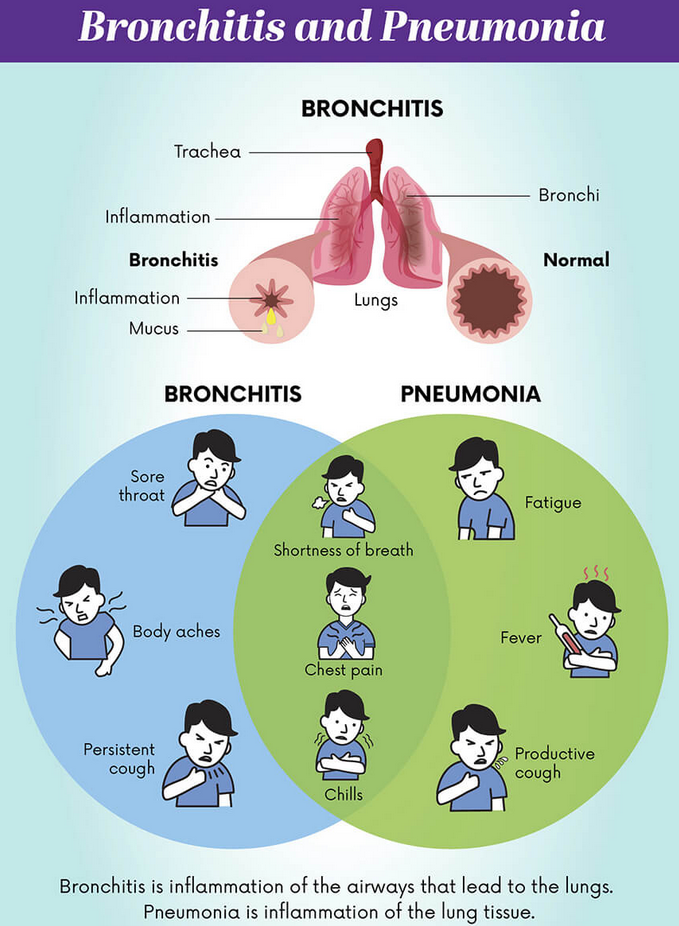


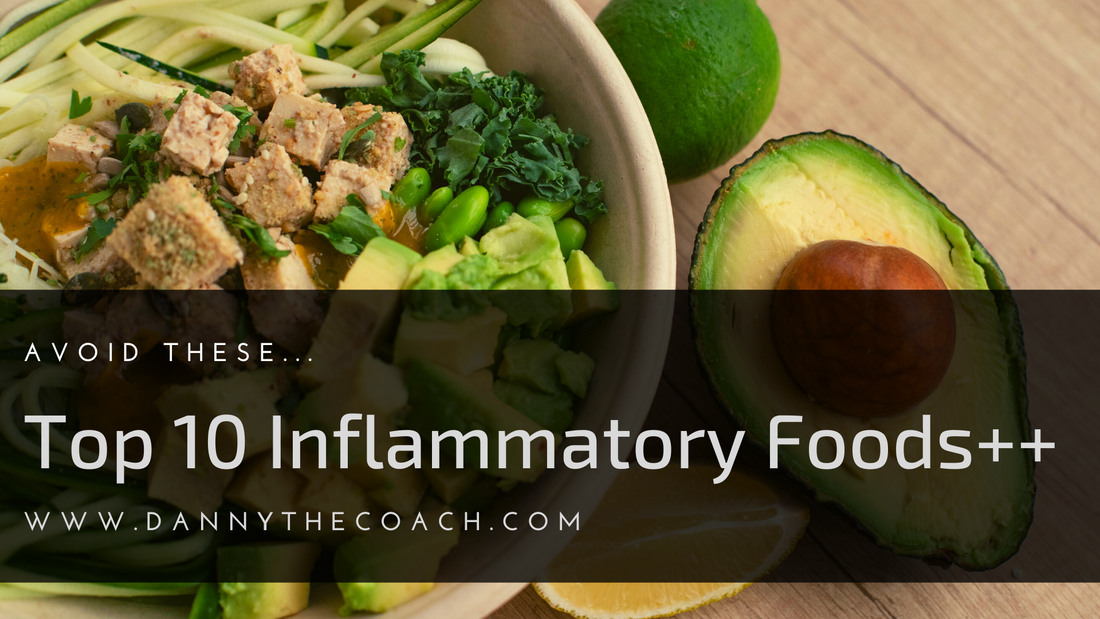
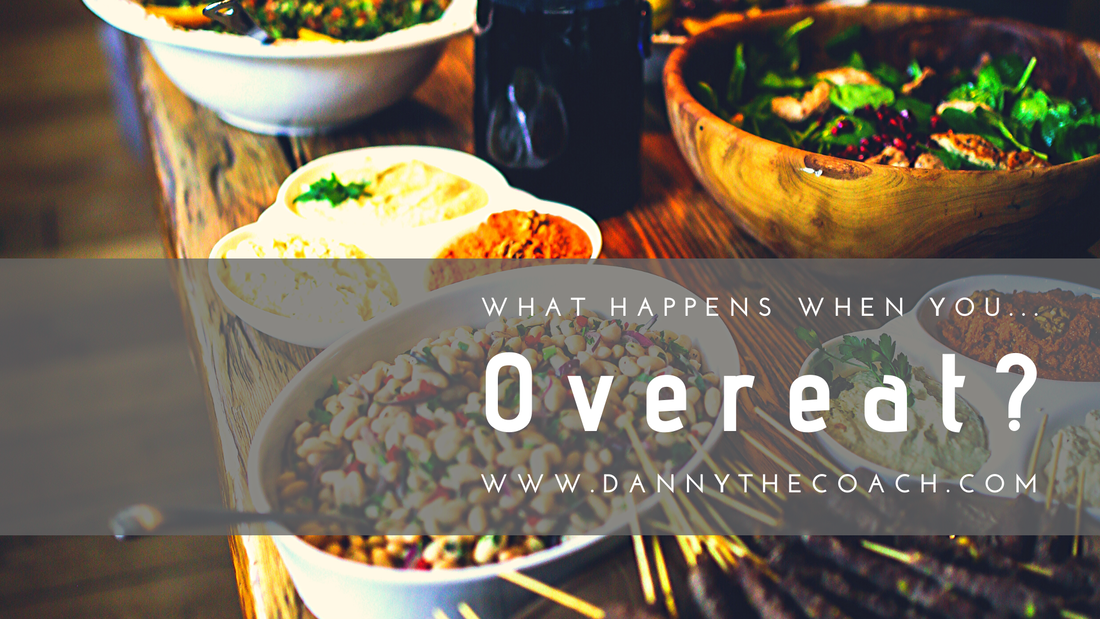










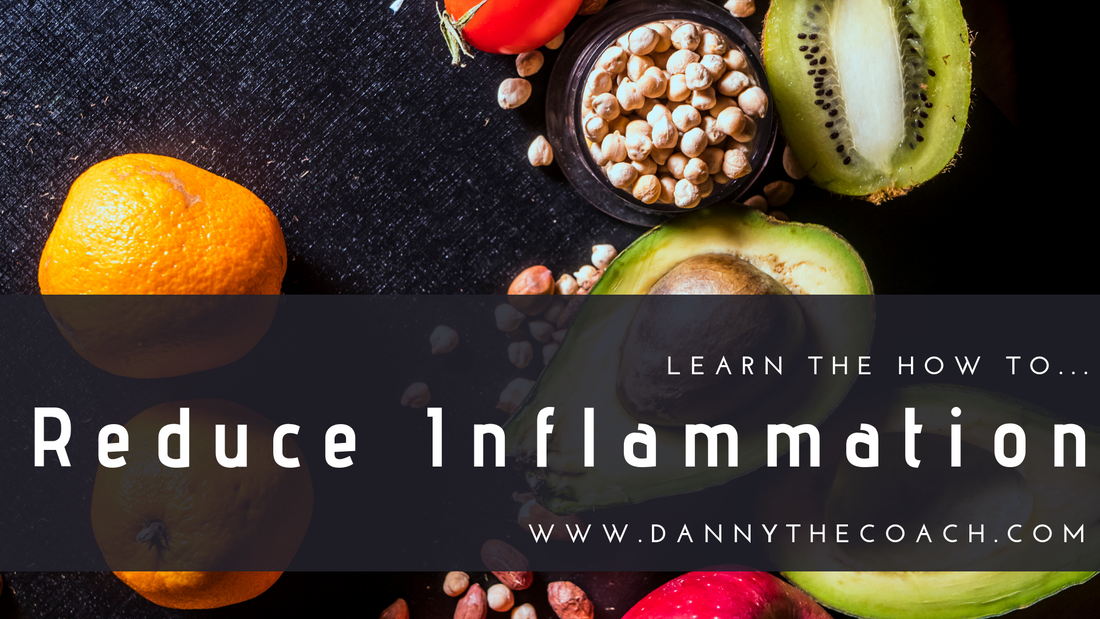
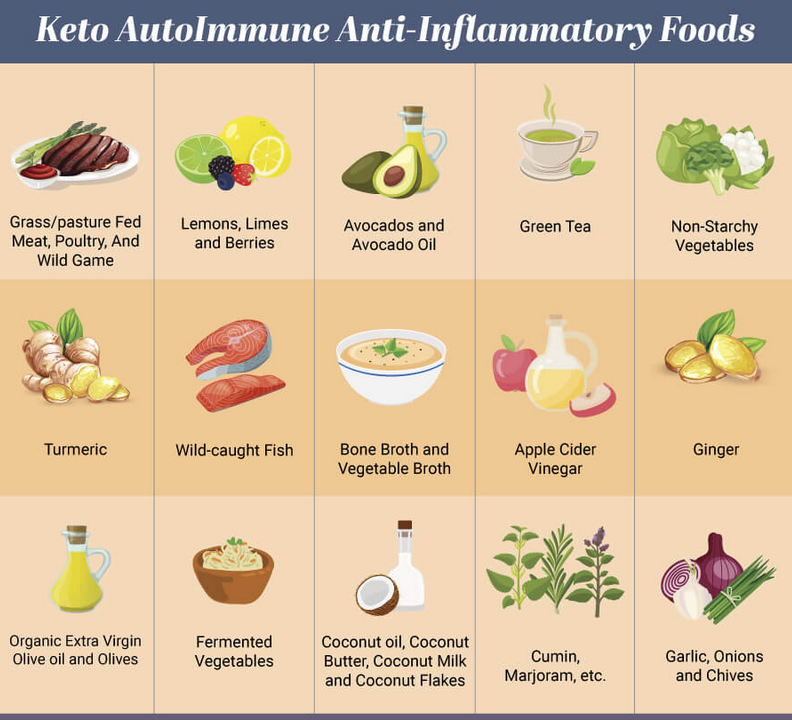
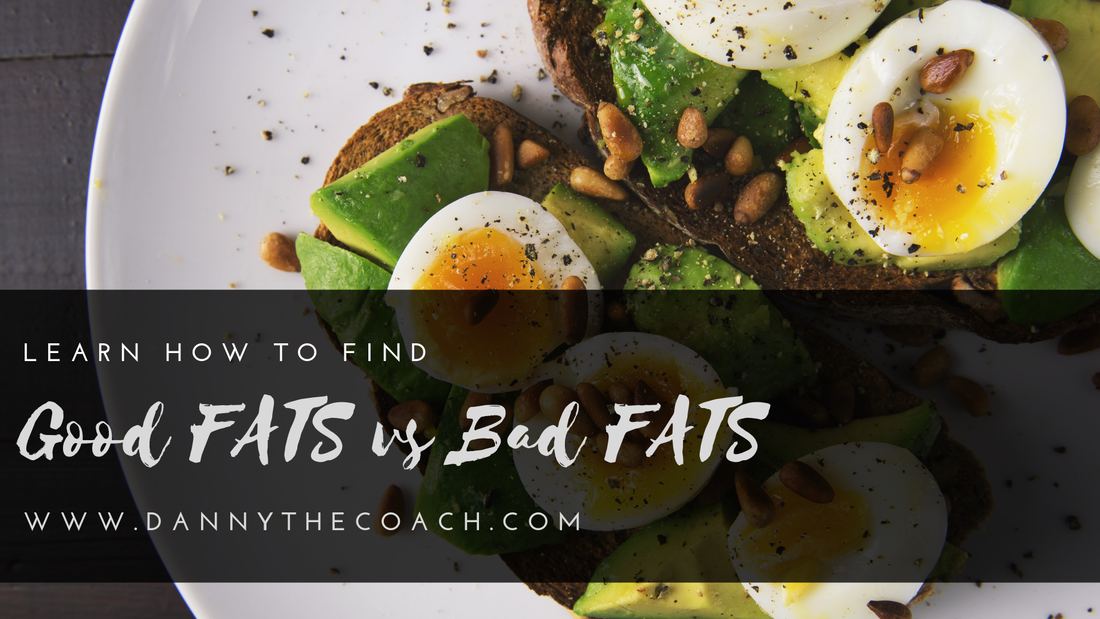
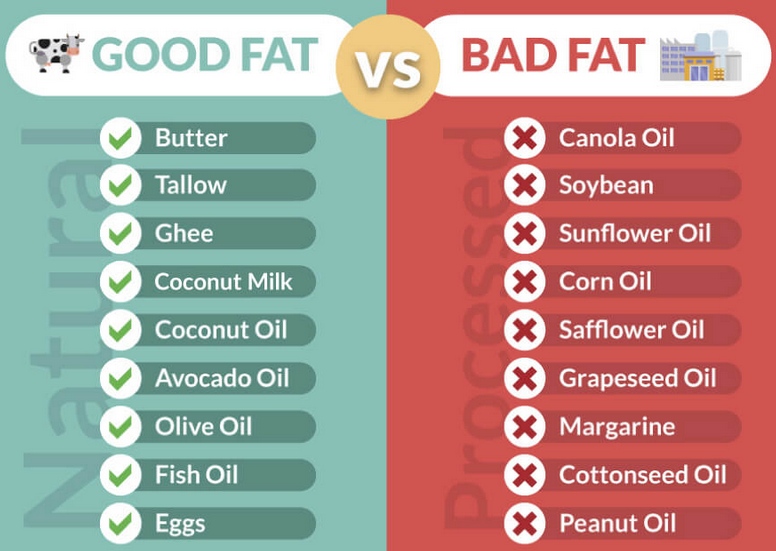
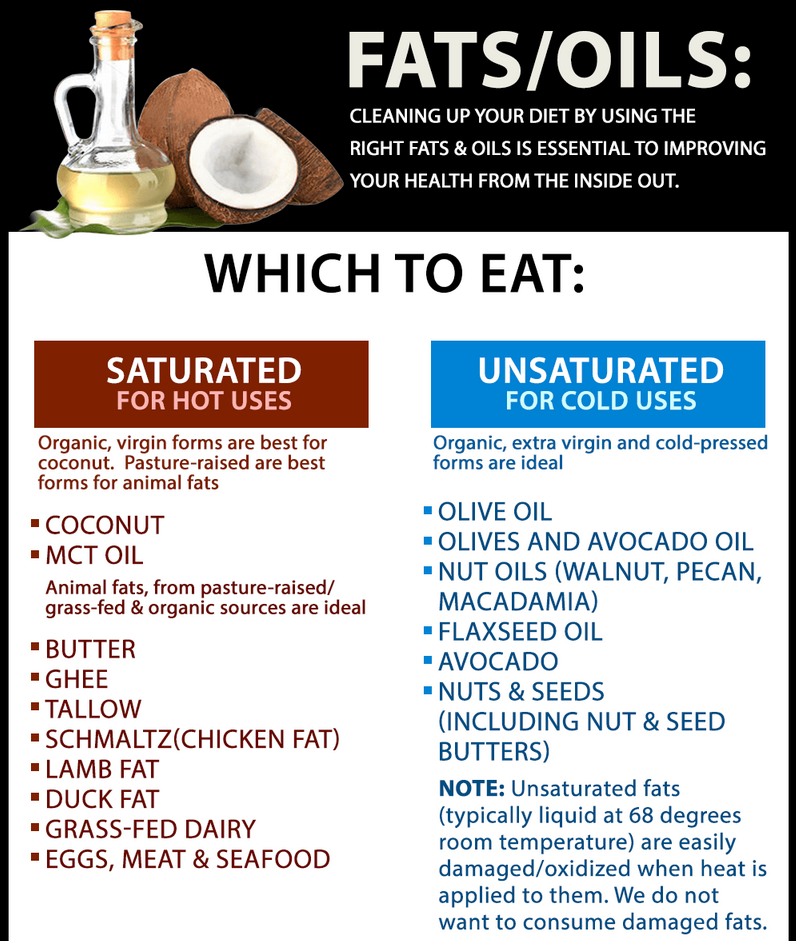
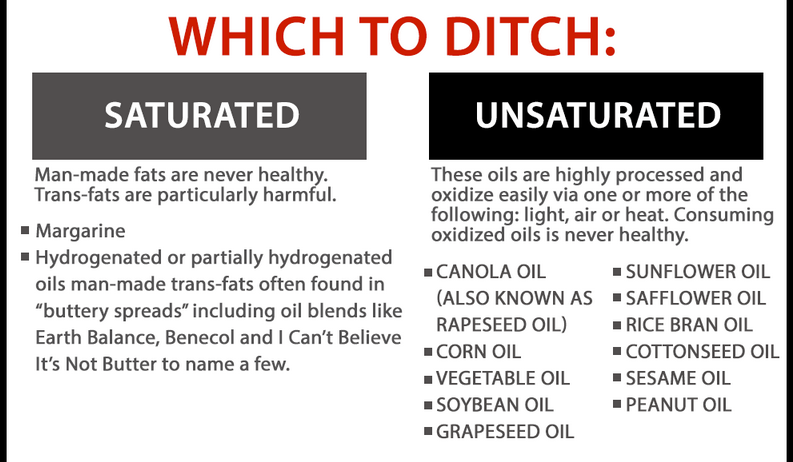
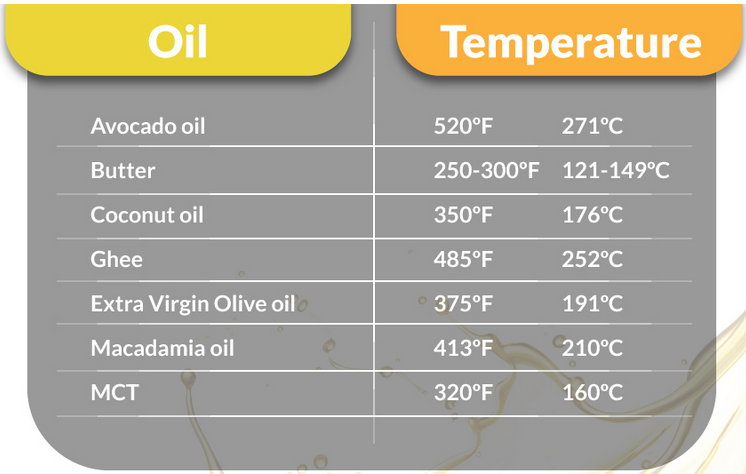
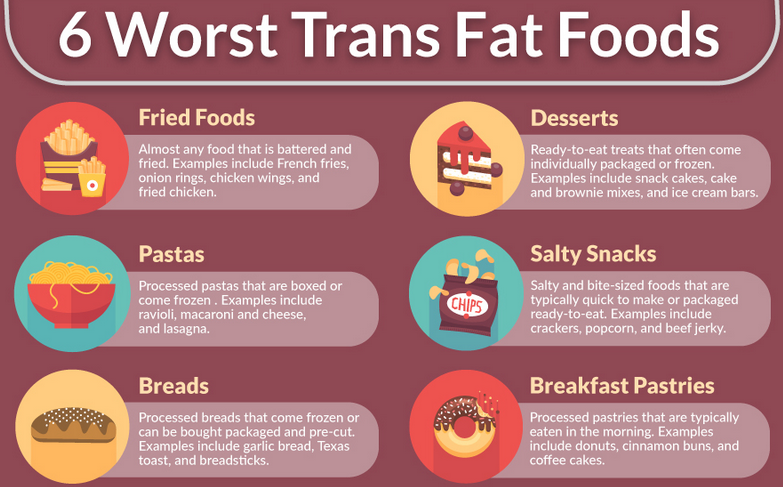


 RSS Feed
RSS Feed